Konstantinos D. Katsanos
Receiving RISs: Enabling Channel Estimation and Autonomous Configuration
Jun 12, 2025Abstract:This chapter focuses on a hardware architecture for semi-passive Reconfigurable Intelligent Surfaces (RISs) and investigates its consideration for boosting the performance of Multiple-Input Multiple-Output (MIMO) communication systems. The architecture incorporates a single or multiple radio-frequency chains to receive pilot signals via tunable absorption phase profiles realized by the metasurface front end, as well as a controller encompassing a baseband processing unit to carry out channel estimation, and consequently, the optimization of the RIS reflection coefficients. A novel channel estimation protocol, according to which the RIS receives non-orthogonal training pilot sequences from two multi-antenna terminals via tunable absorption phase profiles, and then, estimates the respective channels via its signal processing unit, is presented. The channel estimates are particularly used by the RIS controller to design the capacity-achieving reflection phase configuration of the metasurface front end. The proposed channel estimation algorithm, which is based on the Alternating Direction Method of Multipliers (ADMM), profits from the RIS random spatial absorption sampling to capture the entire signal space, and exploits the beamspace sparsity and low-rank properties of extremely large MIMO channels, which is particularly relevant for communication systems at the FR3 band and above. Our extensive numerical investigations showcase the superiority of the proposed channel estimation technique over benchmark schemes for various system and RIS hardware configuration parameters, as well as the effectiveness of using channel estimates at the RIS side to dynamically optimize the possibly phase-quantized reflection coefficients of its unit elements.
The Interference Broadcast Channel with Reconfigurable Intelligent Surfaces: A Cooperative Sum-Rate Maximization Approach
Sep 05, 2024Abstract:This paper studies the interference broadcast channel comprising multiple multi-antenna Base Stations (BSs), each controlling a beyond diagonal Reconfigurable Intelligent Surface (RIS) and serving multiple single-antenna users. Wideband transmissions are considered with the objective to jointly design the BS linear precoding vectors and the phase configurations at the RISs in a distributed manner. We take into account the frequency selectivity behavior of each RIS's tunable meta-element, and focusing on the sum rate as the system's performance criterion, we present a distributed optimization approach that enables cooperation between the RIS control units and their respective BSs. According to the proposed scheme, each design variable can be efficiently obtained in an iterative parallel way with guaranteed convergence properties. Our simulation results demonstrate the validity of the presented distributed algorithm and showcase its superiority over a non-cooperative scheme as well as over the special case where the RISs have a conventional diagonal structure.
Multi-RIS-Empowered Multiple Access: A Distributed Sum-Rate Maximization Approach
Jun 27, 2024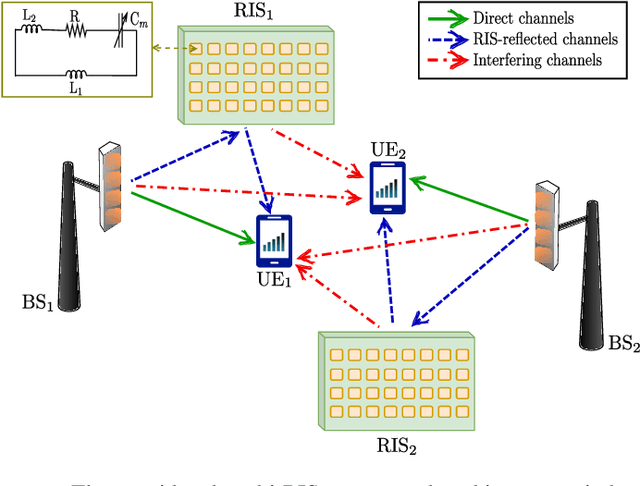
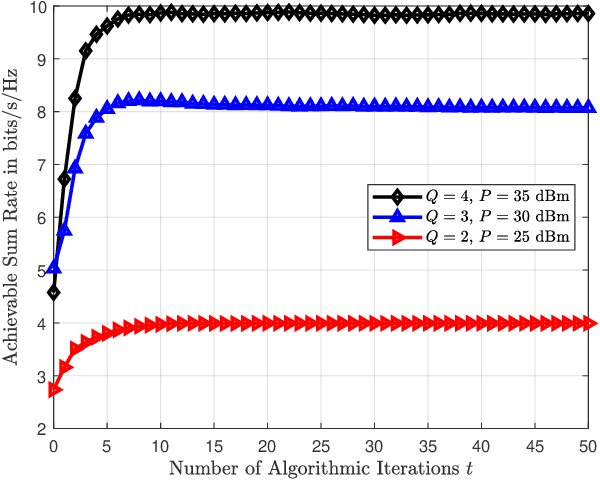
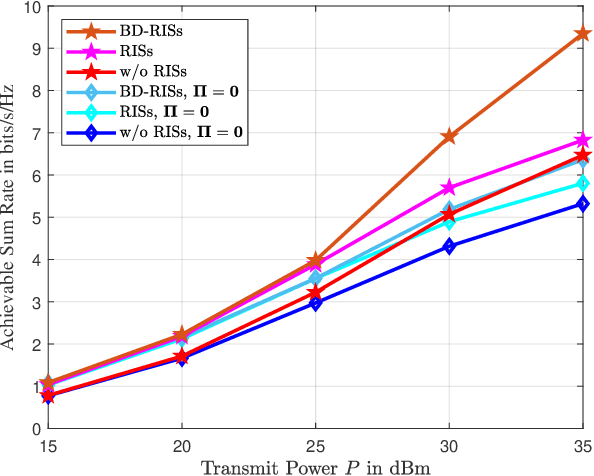
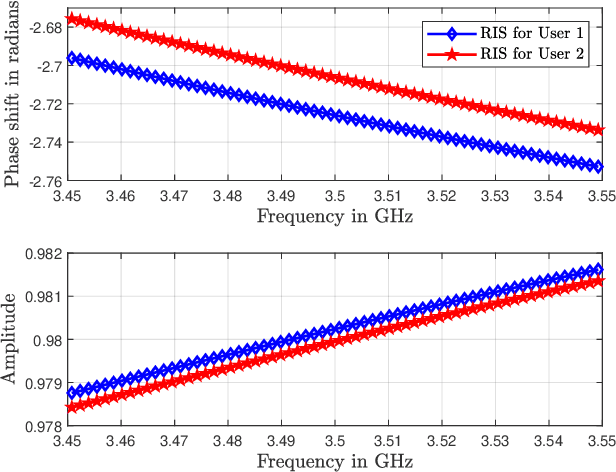
Abstract:The plethora of wirelessly connected devices, whose deployment density is expected to largely increase in the upcoming sixth Generation (6G) of wireless networks, will naturally necessitate substantial advances in multiple access schemes. Reconfigurable Intelligent Surfaces (RISs) constitute a candidate 6G technology capable to offer dynamic over-the-air signal propagation programmability, which can be optimized for efficient non-orthogonal access of a multitude of devices. In this paper, we study the downlink of a wideband communication system comprising multiple multi-antenna Base Stations (BSs), each wishing to serve an associated single-antenna user via the assistance of a Beyond Diagonal (BD) and frequency-selective RIS. Under the assumption that each BS performs Orthogonal Frequency Division Multiplexing (OFDM) transmissions and exclusively controls a distinct RIS, we focus on the sum-rate maximization problem and present a distributed joint design of the linear precoders at the BSs as well as the tunable capacitances and the switch selection matrices at the multiple BD RISs. The formulated non-convex design optimization problem is solved via successive concave approximation necessitating minimal cooperation among the BSs. Our extensive simulation results showcase the performance superiority of the proposed cooperative scheme over non-cooperation benchmarks, indicating the performance gains with BD RISs via the presented optimized frequency selective operation for various scenarios.
Power Minimizing MEC Offloading with QoS Constraints over RIS-Empowered Communications
Dec 15, 2023Abstract:This work lies at the intersection of two cutting edge technologies envisioned to proliferate in future 6G wireless systems: Multi-access Edge Computing (MEC) and Reconfigurable Intelligent Surfaces (RISs). While the former will bring a powerful information technology environment at the wireless edge, the latter will enhance communication performance, thanks to the possibility of adapting wireless propagation as per end users' convenience, according to specific service requirements. We propose a joint optimization of radio, computing, and wireless environment reconfiguration through an RIS, with the goal of enabling low power computation offloading services with reliability guarantees. Going beyond previous works on this topic, multi-carrier frequency selective RIS elements' responses and wireless channels are considered. This opens new challenges in RIS optimization, accounting for frequency dependent RIS response profiles, which strongly affect RIS-aided wireless links and, as a consequence, MEC service performance. We formulate an optimization problem accounting for short and long-term constraints involving device transmit power allocation across multiple subcarriers and local computing resources, as well as RIS reconfiguration parameters according to a recently developed Lorentzian model. Besides a theoretical optimization framework, numerical results show the effectiveness of the proposed method in enabling low power reliable computation offloading over RIS-aided frequency selective channels.
Spatial Secrecy Spectral Efficiency Optimization Enabled by Reconfigurable Intelligent Surfaces
Jun 19, 2023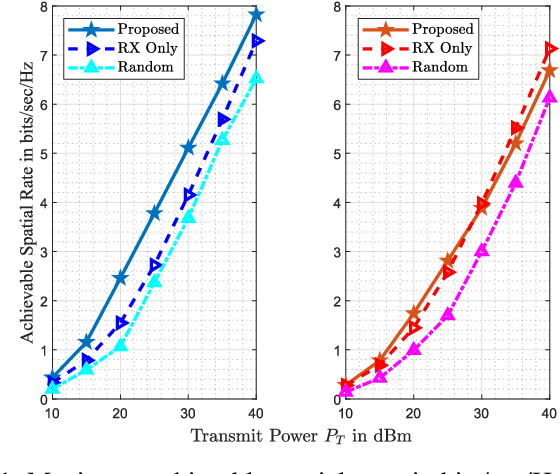
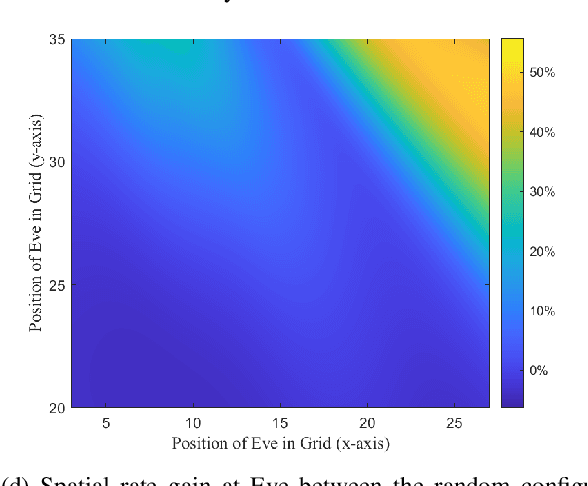
Abstract:Reconfigurable Intelligent Surfaces (RISs) constitute a strong candidate physical-layer technology for the $6$-th Generation (6G) of wireless networks, offering new design degrees of freedom for efficiently addressing demanding performance objectives. In this paper, we consider a Multiple-Input Single-Output (MISO) physical-layer security system incorporating a reflective RIS to safeguard wireless communications between a legitimate transmitter and receiver under the presence of an eavesdropper. In contrast to current studies optimizing RISs for given positions of the legitimate and eavesdropping nodes, in this paper, we focus on devising RIS-enabled secrecy for given geographical areas of potential nodes' placement. We propose a novel secrecy metric, capturing the spatially averaged secrecy spectral efficiency, and present a joint design of the transmit digital beamforming and the RIS analog phase profile, which is realized via a combination of alternating optimization and minorization-maximization. The proposed framework bypasses the need for instantaneous knowledge of the eavesdropper's channel or position, and targets providing an RIS-boosted secure area of legitimate communications with a single configuration of the free parameters. Our simulation results showcase significant performance gains with the proposed secrecy scheme, even for cases where the eavesdropper shares similar pathloss attenuation with the legitimate receiver.
Distributed Sum-Rate Maximization of Cellular Communications with Multiple Reconfigurable Intelligent Surfaces
Aug 02, 2022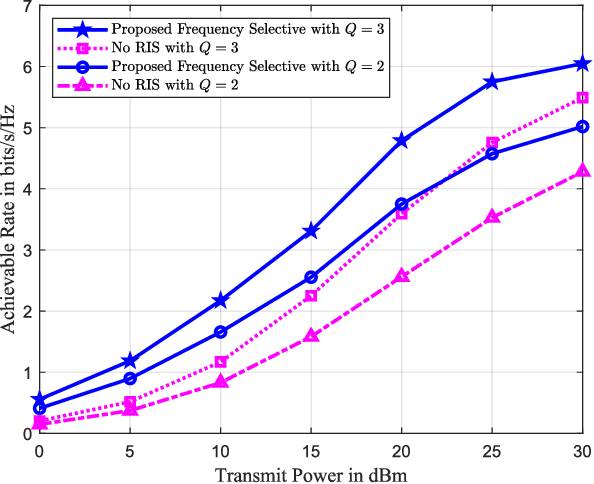
Abstract:The technology of Reconfigurable Intelligent Surfaces (RISs) has lately attracted considerable interest from both academia and industry as a low-cost solution for coverage extension and signal propagation control. In this paper, we study the downlink of a multi-cell wideband communication system comprising single-antenna Base Stations (BSs) and their associated single-antenna users, as well as multiple passive RISs. We assume that each BS controls a separate RIS and performs Orthogonal Frequency Division Multiplexing (OFDM) transmissions. Differently from various previous works where the RIS unit elements are considered as frequency-flat phase shifters, we model them as Lorentzian resonators and present a joint design of the BSs' power allocation, as well as the phase profiles of the multiple RISs, targeting the sum-rate maximization of the multi-cell system. We formulate a challenging distributed nonconvex optimization problem, which is solved via successive concave approximation. The distributed implementation of the proposed design is discussed, and the presented simulation results showcase the interplay of the various system parameters on the sum rate, verifying the performance boosting role of RISs.
 Add to Chrome
Add to Chrome Add to Firefox
Add to Firefox Add to Edge
Add to Edge